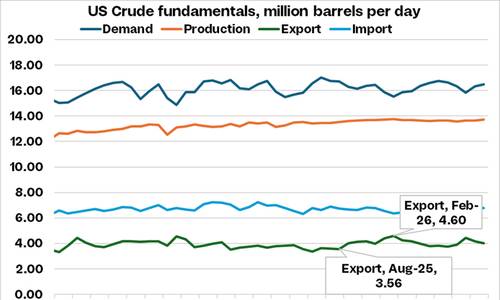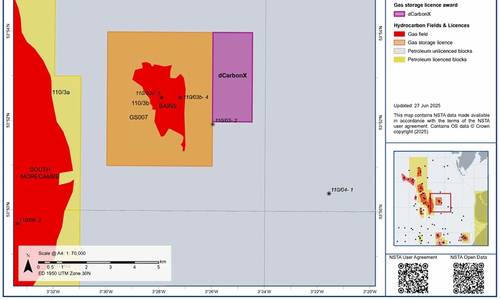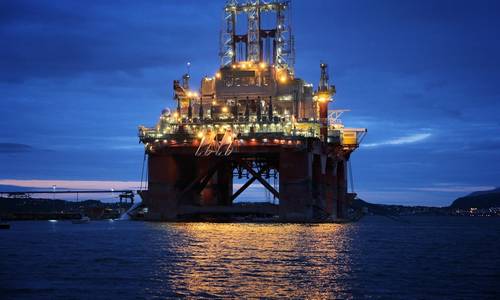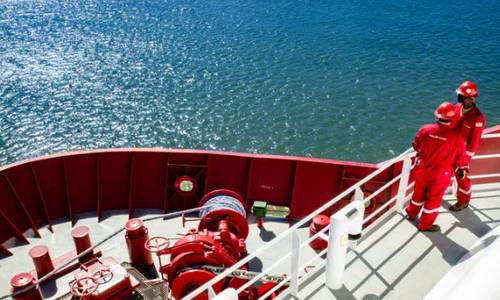The Gulf of America Can Lead in Carbon Storage, If Washington Acts
Erik Milito
August 15, 2025

The United States has everything it needs to lead in offshore carbon capture and storage (CCS), except the rules to make it happen.
Nearly four years ago, Congress gave the Department of the Interior authority to oversee offshore carbon sequestration. The Infrastructure Investment and Jobs Act (IIJA) of 2021 amended the Outer Continental Shelf Lands Act (OCSLA) to authorize competitive leasing and regulation of carbon dioxide injection into subsea formations on the U.S. Outer Continental Shelf (OCS). The law required Interior to issue implementing regulations by November 2022.
That deadline has come and gone. Today, there’s still no proposed rule, and each month without action makes it harder for U.S. companies to compete with early movers overseas.
Around the world, offshore CCS is shifting from concept to commercial reality. In the North Sea, Southeast Asia, and Australia, full-scale projects are being licensed, built, and prepared for decades of safe operation. BloombergNEF projects global carbon capture capacity will increase sixfold by 2030. DNV forecasts $80 billion in cumulative CCS investment over the coming decade.
The U.S. should be leading this charge. Instead, we’re watching competitors move forward while we remain stuck in neutral. Every year of regulatory delay is a year of lost investment, lost technology leadership, and lost opportunity for Gulf Coast communities that are ready to work.
Few regions can match the Gulf of America’s advantages for offshore CCS:
- World-class geology — vast deep saline formations with the capacity to store billions of tons of CO₂ securely.
- Proximity to emitters — major industrial hubs in Texas and Louisiana are just miles from offshore storage potential, reducing transport costs and complexity.
- A seasoned workforce — thousands of engineers, geoscientists, vessel crews, and offshore safety professionals who already operate in this environment daily.
- Proven infrastructure — ports, fabrication yards, and shipyards that can pivot from traditional oil and gas to CCS support.
Gulf Coast CCS momentum is building, even without federal rules in place. In April 2025, TGS released the final segment of its comprehensive
Mega Gulf Coast Assessment, mapping carbon sequestration potential across coastal Texas, Louisiana, and Mississippi. In September 2024, Viridien completed Phase 2 of its GeoVerse Carbon Storage Screening Study for Texas state waters. Meanwhile, the Offshore Gulf of Mexico Partnership for Carbon Storage (GoMCarb) is actively evaluating offshore storage potential, with final results expected by mid-2026. GoMCarb brings together academic researchers, government agencies, and industry to close knowledge gaps, address regulatory and infrastructure needs, and solve the geologic and engineering challenges of storing CO₂ safely and permanently.
The Gulf’s existing offshore energy expertise is unmatched. The same capabilities that built deepwater platforms and subsea systems can now be deployed to develop the next frontier in decarbonization.
We’re already seeing early private-sector investment. But like all capital-intensive projects, CCS needs regulatory certainty. Without a clear leasing process and permitting pathway from the Department of the Interior, developers and investors are forced to delay or look elsewhere.
Interior’s offshore CCS framework must be:
- Durable — providing long-term certainty for investors and operators.
- Transparent — with clear leasing criteria, timelines, and responsibilities.
- Flexible — adaptable to new technologies, evolving best practices, and scale-up needs.
- Grounded in safety and environmental stewardship — leveraging decades of offshore operational experience.
Just as importantly, the process for developing the rules must be open and collaborative, engaging industry, states, and stakeholders to ensure the final regulations are workable and future-proof.
Offshore CCS isn’t just an environmental solution, it’s an economic driver. For Gulf Coast states, it means new contracts for shipyards, fabrication yards, and offshore service providers. For U.S. manufacturers, it means orders for compressors, pipelines, and monitoring systems. For port authorities, it means investments in terminals, dredging, and logistics infrastructure.
It also strengthens America’s energy security. By reducing emissions from hard-to-abate sectors like steel, cement, and refining, industries critical to our economy, offshore CCS helps preserve domestic industrial capacity instead of forcing production offshore.
The offshore energy sector has not been waiting idly. NOIA members have spent the past several years working through trade associations and technical groups to provide detailed recommendations to BOEM and BSEE. These inputs cover everything from site characterization and reservoir integrity to long-term monitoring and liability frameworks.
We appreciate recent signs of federal support, including comments from Interior leadership acknowledging the importance of this issue. We encourage that momentum to continue, because without regulatory clarity, the U.S. risks ceding ground in a critical emerging market.
The U.S. has a unique opportunity to turn one of its most important strategic resources, the Gulf of America, into a world-class hub for carbon management and more broadly a global energy and technology leader for vast activities in the blue economy. Finalizing the offshore carbon storage rules is the key to unlocking that future.
Let’s get it done.






